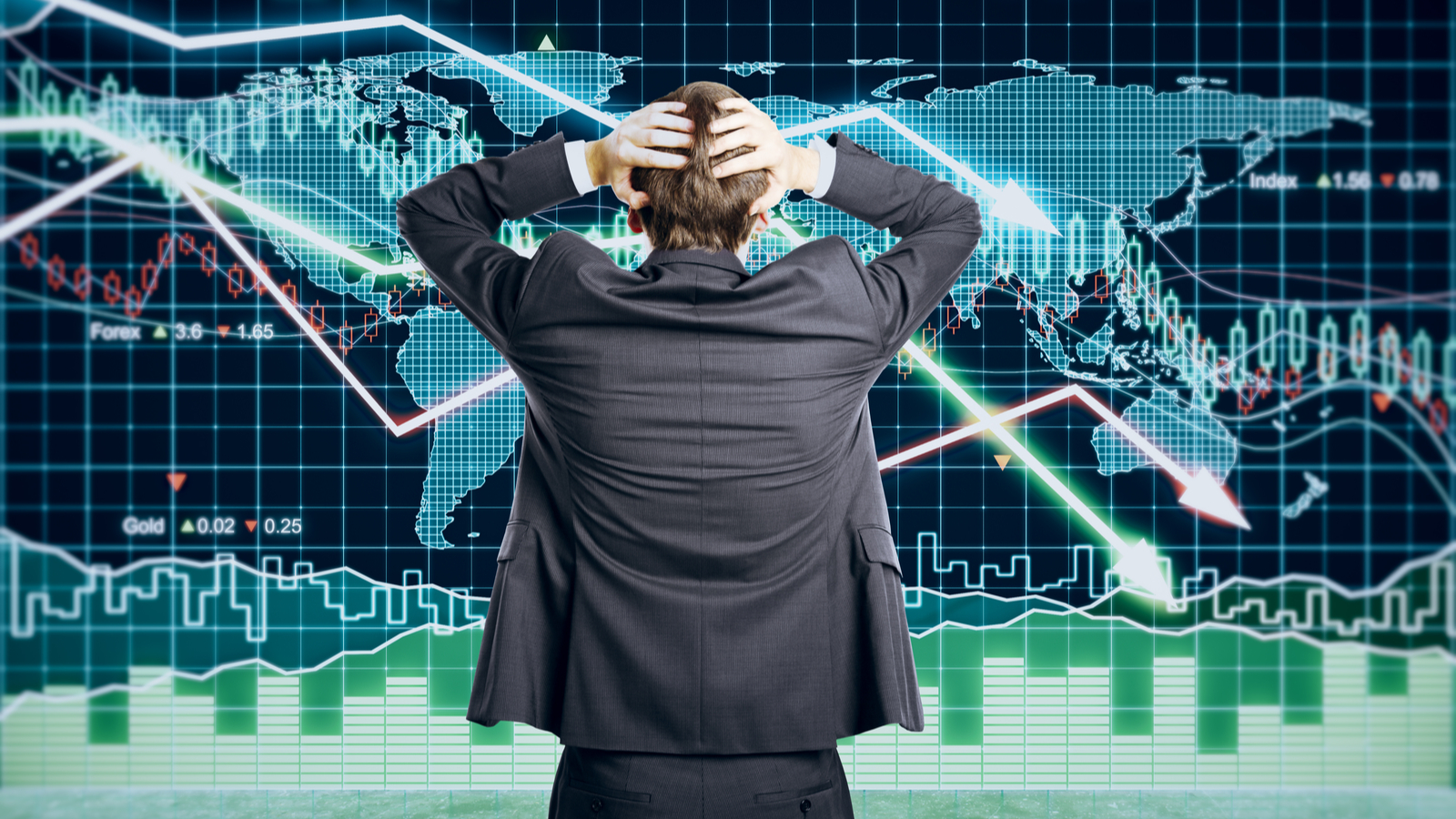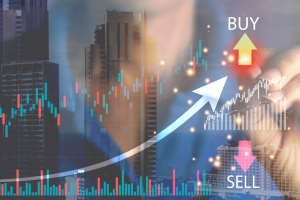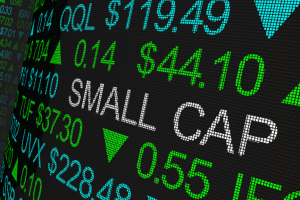
The 10-year Treasury yield is breaking out … are we going back to a “strong” or “weak” economy? … expectations about growth are inconsistent … the 2010s comparison fails
Bulls are facing two big stumbling blocks to their market outlook.
First, they’re using inconsistent growth rates when they forecast tomorrow’s bull market.
Second, they don’t have a great answer to today’s lofty price-to-earnings ratio, which is a problem if we’re allegedly beginning a new, multi-year bull market.
To begin unpacking this, let’s start with the traditional relationship between stocks and the 10-year Treasury yield.
As we’ve detailed here in the Digest , the average stock portfolio struggles when yields are surging. That’s because higher treasury yields lower the net present value of a company’s future cash flows. This results in a lower present-day valuation, or stock price.
Higher treasury yields also lure cautious investors out of the stock market. When they exit their stocks to move into high-yielding bonds, that selling puts downward pressure on stock prices.
Below, you can see this historical relationship. We’re looking at the 10-year Treasury yield in green and the S&P in black between July of 2022 and this past spring (we’ll update the chart momentarily).
Notice that when the 10-year Treasury yield climbs, the S&P usually falls and vice versa.

This relationship has broken down since the spring
Last Friday, the 10-year Treasury yield closed at 4.336%. That’s the highest closing price since 2007. As I write Monday, it’s pushing even higher, not at 4.339%.

This treasury yield strength would suggest weakness for the S&P. However, if we zoom back in and look at what’s happened with stocks since mid-March, you’ll see the S&P has largely climbed right along with the rising 10-year yield (until its August wobbles).

Why? We just looked at how higher treasury yields typically mean lower stock prices. What’s been different for much of this year?
A shift in attitude.
Despite some ups and downs, we’ve seen a big uptick in bullish sentiment this year due to the beliefs that inflation is largely conquered, the Federal Reserve is nearly done hiking rates, treasury yields are about to drop, and the economy is settling into a growth sweet-spot that will fuel a new bull market.
In short, the growing narrative, especially in recent months, has been “we’re through the worst… the clouds are lifting… things are getting back to normal.”
If that’s the case, then we need to look at what “normal” would really mean
Remember when everyone predicted a recession?
You should – it was barely a handful of months ago.
But now, the tune has changed. Instead, analysts and economists predict a “soft landing.” This means no bumpy growth contraction. Just a relatively smooth transition into normal economic growth.
But what does “normal” truly mean when we look across the entire economy/investment landscape?
Well, logic suggests it would mean a more “normal” fed funds rate and a more “normal” 10-year Treasury yield.
Respectively, that means a fed funds rate settling closer to its long-term average of 4.60% and the 10-year Treasury yield climbing closer to its long-term average of 5.88%.
Let’s pause there…
Do you think our economy can handle a fed funds rate that nestles in at 4.60% and stays there? Do you think our stock market can handle a 10-year Treasury yield that pushes higher toward 5.88%?
Those levels, held for the foreseeable future, would do tremendous damage to our economy and stock market.
So, that prompts a question…
If the economy is genuinely strong enough to pull off a soft landing, then why is everyone waiting breathlessly for Federal Reserve Chairman Jerome Powell and his pals to cut rates? Why are all the bulls hoping the 10-year Treasury yield pulls back?
If the economy is so healthy, wouldn’t such low rates/yields be dangerously stimulative? Translation, we’d be risking reigniting inflation, which is nightmare fuel for the Fed these days?
Lower rates and lower yields right now make no sense if the economy is truly healthy and getting back on the right foot. And yet the going bullish assumption is predicated on the notion that lower rates and lower yields are on the way.
So, here’s where the goalposts shift for some bulls. The adjusted argument goes a bit like…
We’re not going back to “normal” – we’re going back to low-growth days like the 2010s that will keep rates and yields down, fueling bullish stocks
Let’s dig into the details here to see if this holds up.
In the wake of the Great Financial Crisis, the Fed slashed rates to 0% to try to stimulate weak economic growth. I mean that almost literally. The average fed funds rate in the 2010s was 0.609%.
Now, by extension, the 10-year Treasury yield was also vastly lower than usual average the 2010s.
The average 10-year treasury yield during the decade was just 2.17%. This is less than half of the long-term average 10-year treasury yield that we noted a moment ago of 5.88%.
This low-rate, low-yield environment was magnificent for stocks. The 2010s was a monster decade for the S&P, with it climbing nearly 200%.
Now, sure, it would be wonderful to go back to this environment. But here’s where we hit our first problem – growth rate inconsistency.
FactSet is the go-to earnings data analytics group used by the pros. Its most recent analysis finds that the average 12-month price target for the S&P from analysts is 16% higher. To be clear, that’s 16% higher on top of the S&P’s 16% gain so far this year.
That’s a whopper of a bull market.
And supporting this bull market, these same analysts project that the S&P 500 will enjoy earnings growth of 12.2% in 2024. For context, YCharts reports that the average S&P earnings growth rate is 9.03%.
This means analysts predict the economy will be robust enough to support not just “normal” earnings growth next year, but well above average growth.
But wait – what about the low-growth days of the 2010s?
I did a little number crunching. For the years 2011 – 2020, the average annual earnings growth rate for the S&P was 3.33%.
Do you see a problem?
On one hand, bulls say we’re going back to the low-growth days of the 2010s when the average annual earnings growth rate was 3.33%…
But on the other hand, bulls are calling for a 2024 earnings growth rate of 12.2% to fuel double-digit gains for the S&P.
Both can’t be true at the same time.
A deeper dive into this year’s gains – sentiment, not earnings
As we’ve profiled in the Digest, the stock market gains this year have come nearly exclusively from investors being willing to pay a higher price for stocks – also known as sentiment. Importantly, the gains have not come from companies generating higher earnings.
Here’s Axios from back in July, a week after Q2 earnings season began:
…Investors haven’t seemed to care much about corporate fundamentals lately.
The S&P 500 is up big this year. But importantly, it’s not really because people think corporations will bag far fatter profits in the immediate future.
In fact, Wall Street analysts think companies in the S&P 500 will see earnings per share rise just 1% in 2023, compared with 2022. The S&P 500, on the other hand, is up 17%.
In other words, share prices are outpacing puny expectations for profit growth.
If we’re beginning a new, sustained bull market from here, it must be fueled from new, sustained earnings growth – if not now, then very soon. After all, investor sentiment has carried us a long way this year, but sentiment eventually needs a boost from real earnings growth.
Now, right off the bat, that again conflicts with the bullish narrative of a low-growth environment, but let’s compare this to the 2010s environment to get a better feel for the situation. This dovetails into our second challenge for bulls.
A look at the price-to-earnings (PE) ratio in the 2010s shows why we can’t make that a good comparison today
If we take the S&P’s 12-month trailing PE ratio from 2011 through 2022, it averages 20.6.
But we must take that with a huge grain of salt. After all, 2020 brought the pandemic and the related massive PE spike as you’ll see below. So, that average PE ratio should be lower.
Also, as you look at the chart below, note the lowest PE ratio during the 2010s. It was below 14.
Today, the S&P’s PE ratio sits at 25.41 according to Multpl.com.
In other words, today’s market is already 23% more expensive than the average 2010s PE ratio (even including the pandemic spike), and almost 90% more expensive than that decade’s lowest PE.

The 2010s bull market had the benefit of a very low PE starting point coming out of the Great Financial Crisis. That low starting PE included both depressed sentiment and a lower market price. That afforded plenty of overhead room for growth in both.
That’s hardly our situation today.
We already have an expensive PE ratio that has been pushed higher mostly by bullish sentiment this year. We’re starting from a PE of more than 25 – that’s higher than even the highest yearly PE ratio from the entire 2010s decade.
But a real, multi-year bull market from this point needs not just bullish sentiment but real robust earnings growth…
However, bulls say we’re entering a low-earnings-growth environment…
Yet bullish analysts are basing their S&P price targets on a high-earnings-growth environment…
The narrative cannot be both things at once, and yet after digging into it, that’s where we are.
So, how does this resolve?
Well, look at the surging dollar… the skyrocketing price of oil… and the ever-weakening and indebted U.S. consumer…
All of this suggests a low-growth environment. Unfortunately, contrary to the bullish narrative, with a low-growth economy comes low-growth earnings. That wouldn’t necessarily be a problem for the stock market if we were starting from a low valuation – but we’re not.
Now, this doesn’t mean the market will crash.
But it could mean that the market needs years of underperformance to give time for earnings to grow into today’s lofty valuations that have been pumped higher nearly exclusively by sentiment.
On that note, I should point out that the quant shop Research Affiliates is calling for a decade in which the S&P’s average yearly return is just 2%.
We’re running long, so let’s wrap it up…
One, if we’ve truly dodged a recession and the economy is back on the right track as some bulls suggest, then we should revert to a more average 10-year treasury yield and average fed funds rate. But we can’t because we’re not back to normal. Those average rates would be wrecking balls.
Two, if we’re returning to a 2010s environment as some bulls suggest, then logic would suggest rates closer to the 2010s average fed funds rate of 0.609% and the 2010s average 10-year Treasury yield of 2.2%. But that can’t happen because those lower rates would pour gasoline on inflation.
Three, if we’re in the early days of a multi-year bull market, then you’d expect lots of price-to-earnings expansion headed our way as the bull market pushes prices higher. But that’s going to be tough given today’s elevated starting PE of 25 – especially if “low earnings growth” ends up being accurate.
Despite all this, our advice remains the same as it’s been for months – trade this bull market higher but be ready to get out when it turns.
Have a good evening,
Jeff Remsburg



